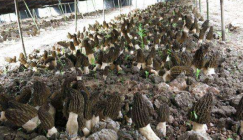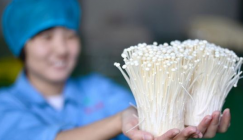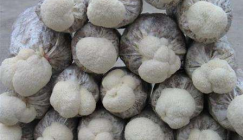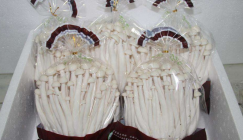FOREWORD: Along with the enhancement of people’s living standard, the diet idea of “One Meat, One Vegetable and One Mushroom” has been sinking into the heart of consumers. As a kind of edible, medicinal and nourishing varierty, Oyster mushroom integrates nature, nutrition and health care into one. Under the forest, wet air and sufficient oxygen are conducive to Oyster mushroom production.
For that pattern, growers have to follow the guideline of “Strict Operation, Superior Strain and Precise Management”, and fully utilize natural resources of forest land, reasonably allocate human resources to carry through the cultivation by perfect scientific and technological resources.
MATERIALS AND METHOD:
Pattern of under-forest Oyster mushroom cultivation:
A. Under-forest, Open-type and Auxiliary-material Cultivation in Small Arch Shed
B. Under-forest and Fermented-bags Cultivation in Simple Shed
RECOMMENDED FORMULA:
Cottonseed hull 96%, Lime 4%, Corncob 45%, Wheat bran 6%, Lime 4%, Wheat straw 70%, Corncob 20%, Cow dung 5%, Phophate fertilizer 2%, Lime 3%.
CULTIVATION TECHNOLOGY:
Bag-mode Cultivation Technology of Oyster Mushroom
Weigh all compost in accordance with the formula, combine with water and go through the fermentation, then blend with a certain proportion of pesticide, do the bagging while carrying through the inoculation, after that, place mushroom bags in dark arch shed or common shed to promote the spawn running. On the seventh and fourteenth day of spawn-running period, turn over piles for a time. After 20-25 days, mycelia become fully-grown and evolve into physical maturity, fruiting time arrives when yellow water is secreted in bags. At that time, spray water and enhance the scattered light. After another 2-3 days, mushroom bodies take shape and growers could arrange the picking while mushroom caps are revolute.
Development the Reutilization of Waste Materials: Waste materials of Oyster mushroom could be reused for Drumstick mushroom cultivation, they could be returned to the forest land as organic fertilizer, which promotes the ecological balance.
COST ACCOUNTING IN EACH 100 SQUARE METERS OF CULTIVATION AREA:
Bamboos used for a small arch shed (Specification: 2.5m×40m) cost 40-60 CNY, film and sunshade net respectively costs 100-150 CNY and 200 CNY.
Cost on compost: In general, 1500kg of materials are needed in each 100 square meters. As formulas vary from project to project, it generally costs 600-1500 CNY.
Cost on strain: For 1500kg of compost, 200-225kg of strain are required, totalling 400-450 CNY.
Expenses on labour and others: 300 CNY or so.
CONCLUSION:
Combination between bag-pattern and ridge cultivation embodies the diversity while lowering the risk.
Diversification of raw materials and formulas: It is best not to choose single compost or formula. And, blend simple infrastructures with modernized facilities. In addition, be sure not to blindly expand cultivation scale, and it is necessary to set up the concept of “Sterile Operation and Standardized Technology Management”.

 LATEST NEWS
LATEST NEWS

 MOST POPULAR
MOST POPULAR




